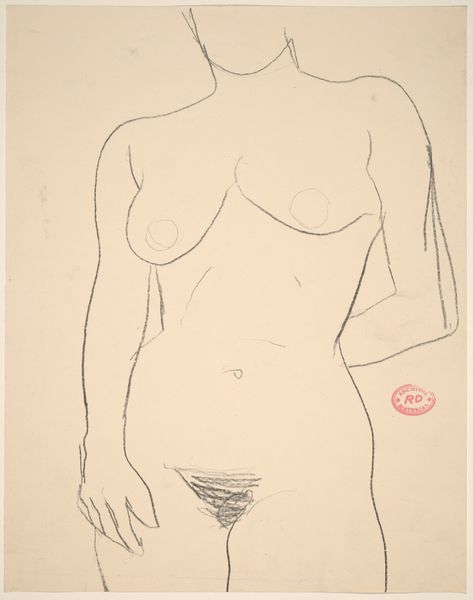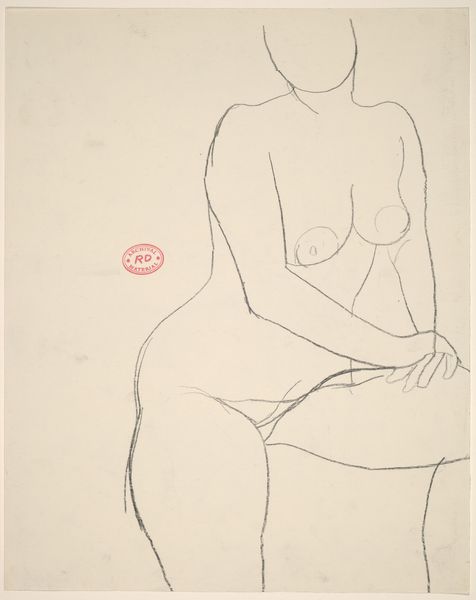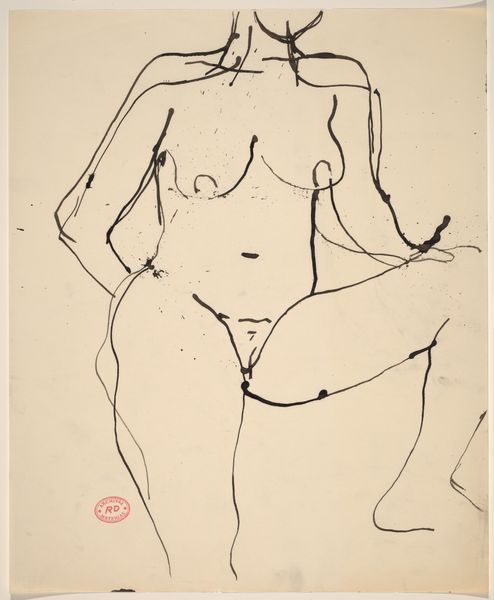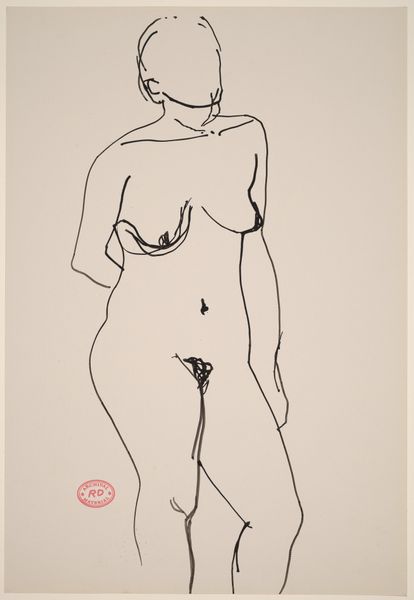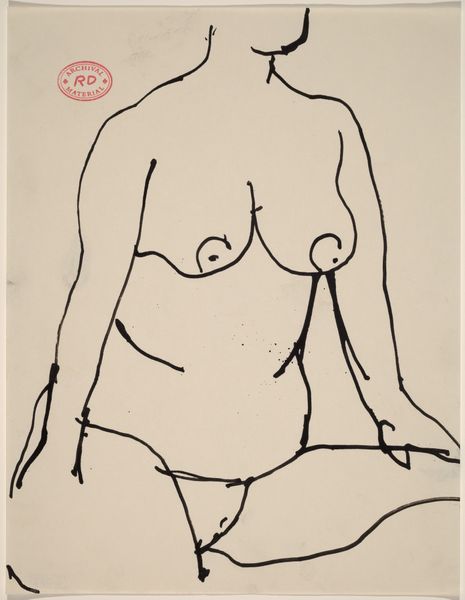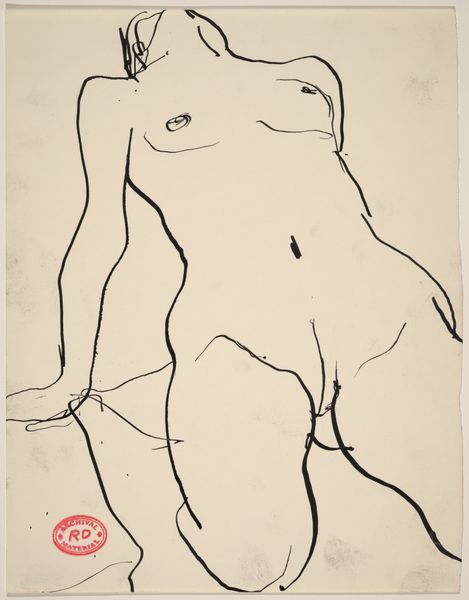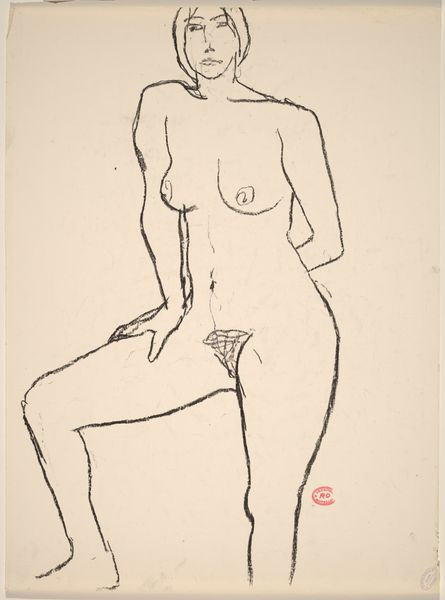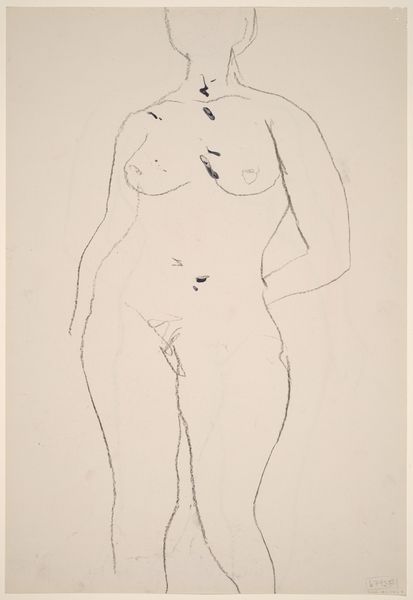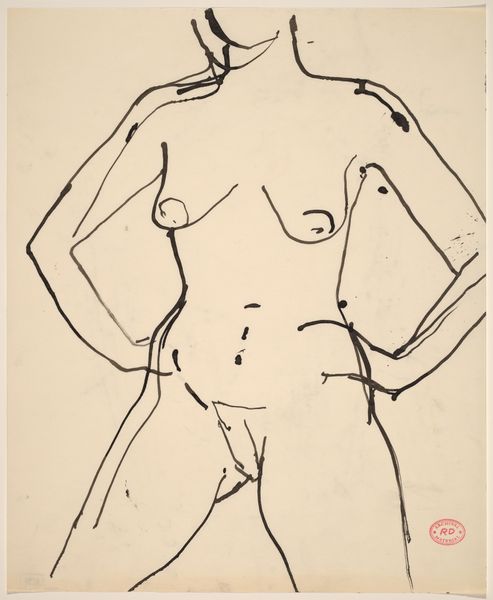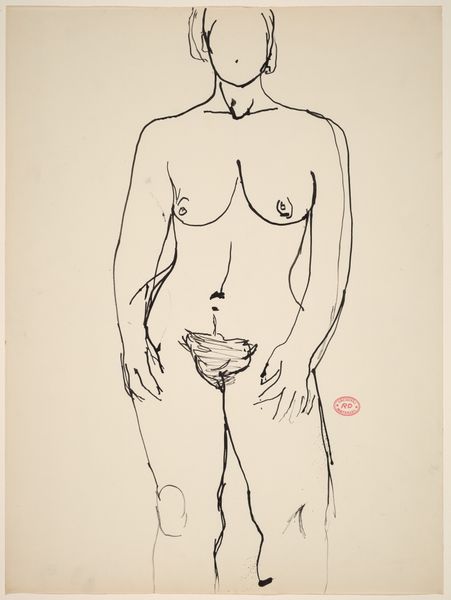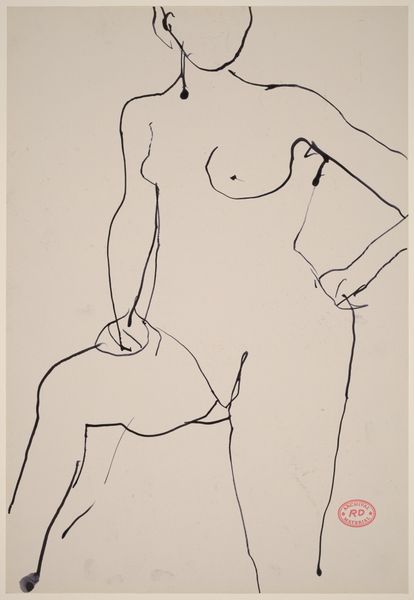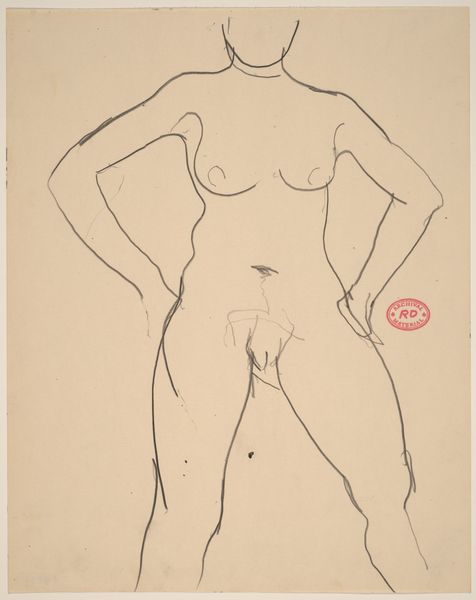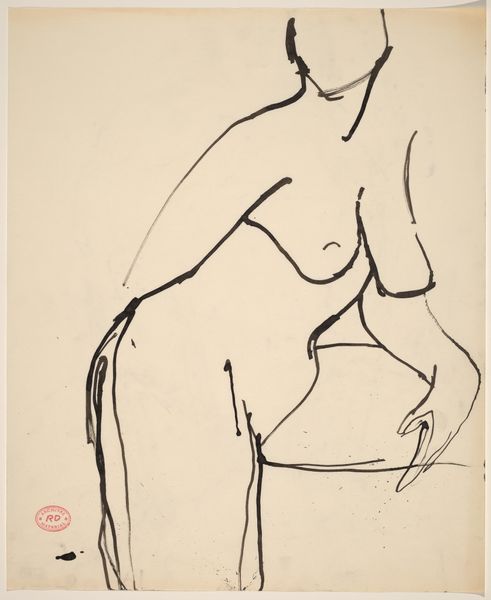![Untitled [nude with hands on her hips] by Richard Diebenkorn](/_next/image?url=https%3A%2F%2Fd2w8kbdekdi1gv.cloudfront.net%2FeyJidWNrZXQiOiAiYXJ0ZXJhLWltYWdlcy1idWNrZXQiLCAia2V5IjogImFydHdvcmtzL2U1YjYxMzM2LTYyODgtNGQzMC1hN2I1LWY5NmMxYmMzNDYyNS9lNWI2MTMzNi02Mjg4LTRkMzAtYTdiNS1mOTZjMWJjMzQ2MjVfZnVsbC5qcGciLCAiZWRpdHMiOiB7InJlc2l6ZSI6IHsid2lkdGgiOiAxOTIwLCAiaGVpZ2h0IjogMTkyMCwgImZpdCI6ICJpbnNpZGUifX19&w=3840&q=75)
drawing, ink
#
drawing
#
ink drawing
#
figuration
#
bay-area-figurative-movement
#
ink
#
line
#
nude
Dimensions: overall: 36.5 x 29.2 cm (14 3/8 x 11 1/2 in.)
Copyright: National Gallery of Art: CC0 1.0
Editor: Here we have Richard Diebenkorn’s "Untitled [nude with hands on her hips]," created sometime between 1955 and 1967 using ink on what appears to be paper. The starkness of the black lines against the white creates a bold simplicity. How would you interpret this work, considering its historical context? Curator: I see a fascinating commentary on the objectification of the female form, even in its seemingly simplified representation. Diebenkorn was working in a period heavily influenced by the male gaze. How does the artist’s reduction of the figure to essentially a series of lines perhaps challenge or even critique that pervasive viewpoint? Consider, also, the Civil Rights era: is there something inherently political about representing a nude figure so devoid of detail during a time of intense focus on identity and visibility? Editor: I never thought about it like that. I was just focusing on the formal aspects, like the economy of line and the strong, confident pose. I wonder if Diebenkorn was consciously making a political statement or if it was more subconscious? Curator: Perhaps both. Artists are rarely working in a vacuum. This drawing enters a long history of nudes in art, overwhelmingly painted by men and often for a male audience. Even without explicitly setting out to critique this tradition, Diebenkorn is participating in a dialogue about how women are seen—and how they are not seen. Does the facelessness, for example, contribute to a sense of depersonalization, or perhaps universalization? Editor: That's a powerful point. I see how this work is less about the individual and more about broader societal attitudes. I hadn’t connected it to the historical context in that way. Curator: Considering art in conversation with historical and political narratives gives us another lens through which to view these works. This intersection is often where the most profound understandings emerge.
Comments
No comments
Be the first to comment and join the conversation on the ultimate creative platform.
